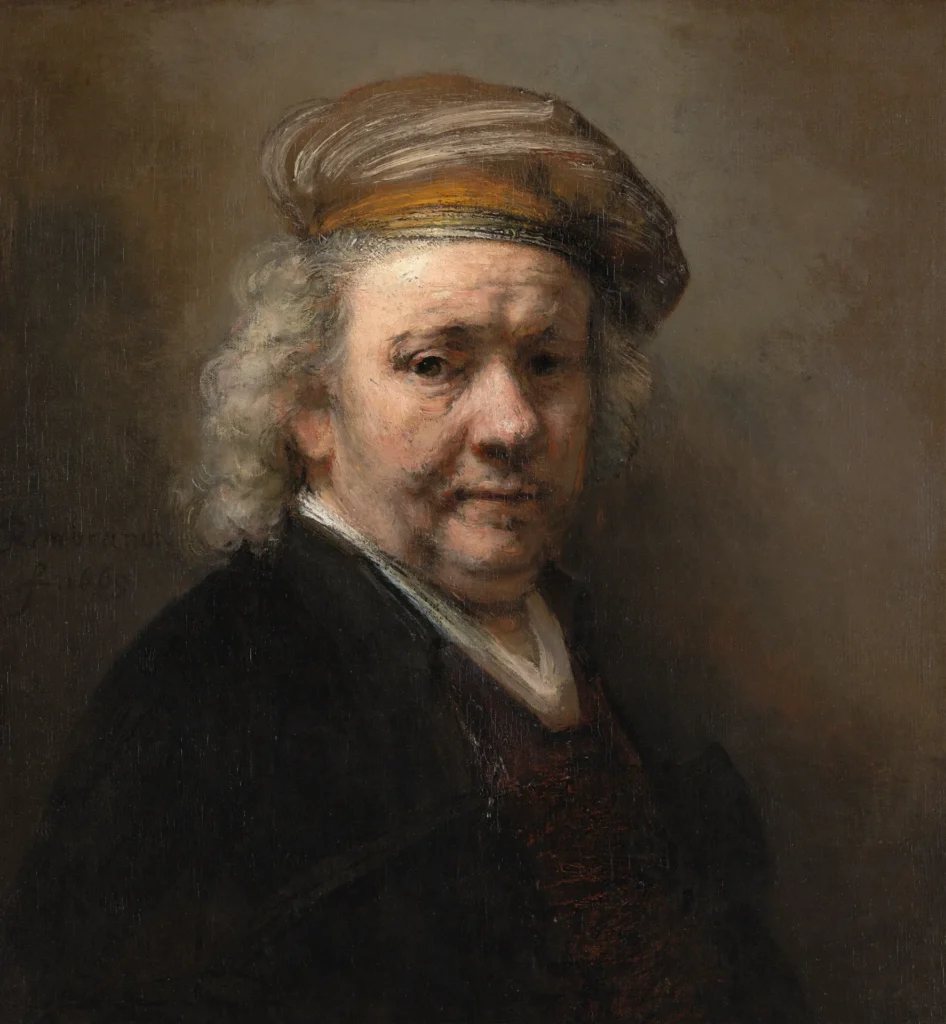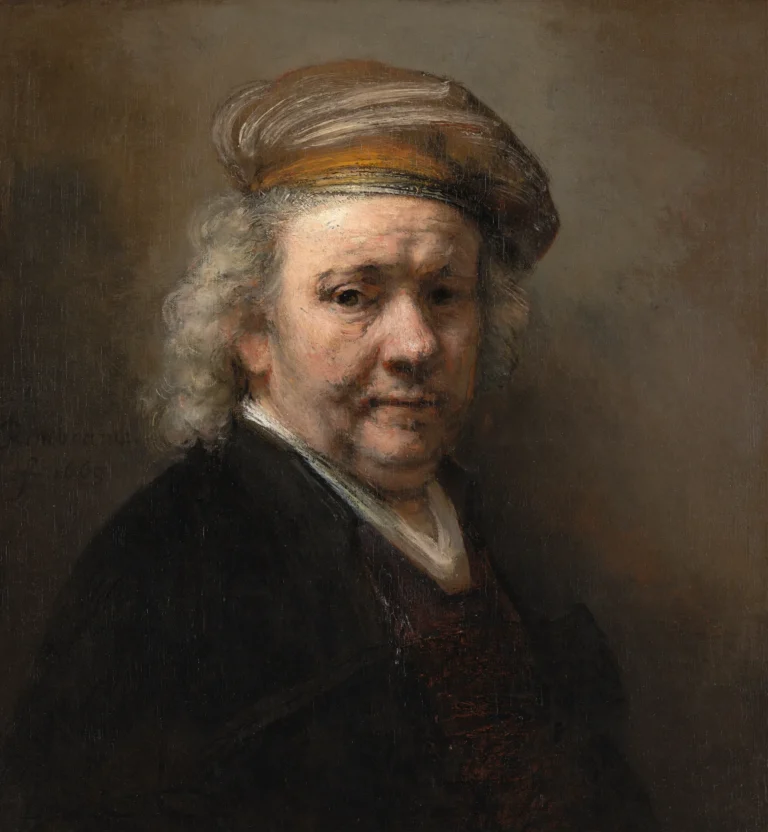Self-Portrait (1669) of Rembrandt Van Rjin
Rembrandt's Self-Portrait of 1669 stands as one of the last reflections of his life and artistry, painted shortly before his passing. The artwork showcases a mature Rembrandt adorned in a deep red coat and a beret, his scrutinizing gaze directing engagement with the viewer. Utilizing a limited palette, Rembrandt highlights texture and the natural signs of aging, alluding to his ongoing fascination with the complexities of human expression. The piece serves as a poignant reminder of the artist's exceptional ability to capture the essence of humanity.
Year 1669
About the Artwork
Did You Know
Liked what you see? Add it to your collection.
Enjoyed reading? Share it.
... continued
Creation and Context
This self-portrait was painted in 1669, just months before Rembrandt's death on October 4, 1669, at the age of 63. It is one of three self-portraits Rembrandt created in the year of his death, and it marks the culmination of a series of around 80 self-portraits he painted throughout his career.
Composition and Technique
The painting depicts Rembrandt wearing a deep red coat with a fur collar and a beret. His hands are clasped, and his direct gaze engages the viewer. Initially, the beret was larger and white, and his hands were positioned differently, holding a paintbrush and maulstick. These changes were revealed through X-ray analysis. Rembrandt used his characteristic limited palette of lead white, ochres, and red lakes. The painting features thick, layered brushstrokes, particularly evident in the rendering of his ageing skin.
Style and Interpretation
Despite his advanced age and the proximity of his death, the portrait conveys a sense of self-assurance and confidence. The focus is on the textures and colors of his ageing face, with meticulous attention to the sagging skin, blemishes, and other signs of age. The background and the details of his robe are painted more sketchily, with the emphasis on the face and its expressions. This creates an effect of intense self-scrutiny.
Provenance
The painting was part of several private collections before it was acquired by the National Gallery in London in 1851 for £430 10s.
Significance
This self-portrait, along with his other late works, reflects Rembrandt's continued mastery of his craft even in his final years. It also highlights his fascination with the human face and his ability to capture the subtleties of ageing with remarkable honesty. The painting is often seen as part of Rembrandt's process of self-examination, though his motives may have been more driven by professional curiosity about the human form rather than deep introspection.










